Blog
How To Fix An Electric Scooter| 12 Ways to Repair Quickly
With our detailed instructions, you can learn how to fix an electric scooter. We cover anything, from a dead battery to a malfunctioning brake. Use our simple methods to quickly get your electric scooter running again.
Are you having problems with your electric scooter? Don’t worry, we’ve got you covered. Read on and discover how to go from a breakdown to a break free in no time! Whether you’re dealing with a flat tire or an unexpected detour, we’ve got the tips and tricks you need on how to fix an electric scooter and make sure your electric scooter is up and running again in no time. Let’s get that ride running right!
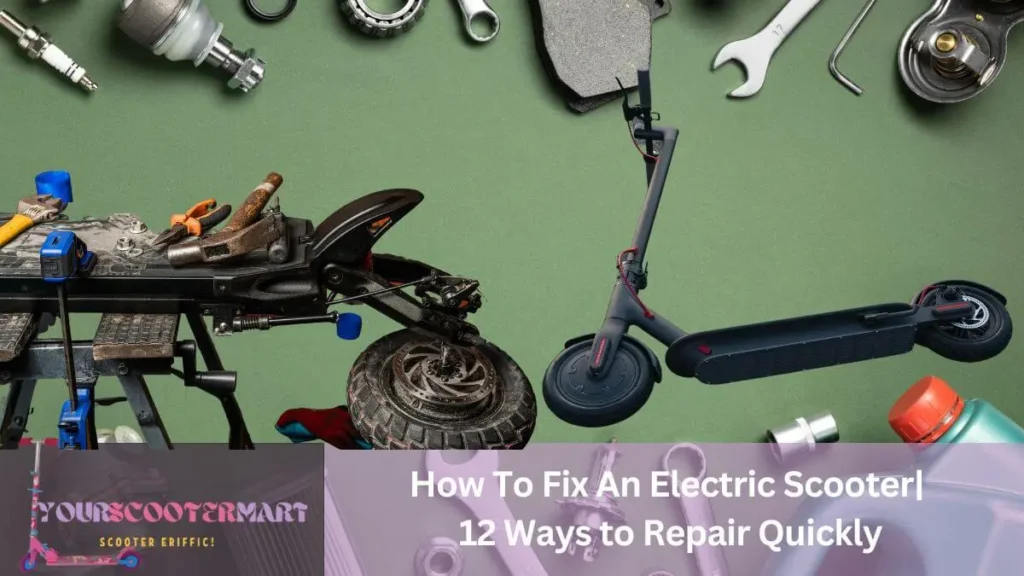
Introduction
Electric scooters are becoming increasingly popular due to their maneuverability, portability, and ease of use. Electric scooters provide a convenient and affordable way for people to get around and have become a staple in many commuting routines.
Like any other machine, an electric scooter is bound to encounter some issues from time to time. From flat tires and brakes that don’t work correctly to speed control problems, the variety of issues can vary. You won’t think why isn’t my electric scooter working. With the right knowledge, however, it is possible to fix most problems on your own. This guide will provide you with a better understanding of how to fix an electric scooter common problems and solutions that are easy enough for anyone with basic knowledge of mechanics and tools to complete.
Whether you’re troubleshooting an existing problem or performing routine maintenance, this guide aims to equip you with all the necessary information that will enable you to get your electric scooter back up and running in no time.
Safety Considerations
Safety is a priority when it comes to troubleshooting and fixing an electric scooter, so if you know how to fix an electric scooter, before proceeding with any repair work, make sure to read your vehicle’s manual and safety instructions carefully, and ride a scooter safely. Additionally, as high-voltage battery system-powered electric scooters, never attempt any work while the battery is connected — always disconnect the main power supply first.
As an extra precaution, consider wearing eye protection and rubber gloves during the entire process to minimize the risk of electrocution or injury. Additionally, take all necessary precautions to ensure that the repair area is free of debris or any other potentially hazardous materials. Finally, make sure all tools are secure and properly grounded before performing any electrical work. Check below for the ways how to fix an electric scooter.
How to Fix an Electric Scooter: Most Common Issues
Electric scooters are popular modes of transportation, but they need regular maintenance and care to stay in good working condition. Before attempting to fix or replace any parts on an electric scooter, it’s important to inspect all the components thoroughly and identify any problems or worn parts that may be causing the issue.
If a part cannot be repaired or is too worn out to continue working, it may need to be replaced. This guide will tell you in detail how to fix an electric scooter, how to inspect different parts of an electric scooter as well as how to safely and correctly replace them. Learn how to lock an electric scooter here.
Before doing any repairs, make sure your scooter is unplugged and switched off.
1. Resetting an Electric Scooter
For a few reasons, I advise that you reset your electric scooter. One reason is that by assisting in the removal of any potential software flaws or mistakes, performance and stability can be enhanced. Resetting your scooter might also assist in resolving app or other device connectivity issues. Additionally, clearing saved information, including trip history, settings, and preferences, can be helpful. Resetting your electric scooter will generally aid to guarantee peak performance and functionality.
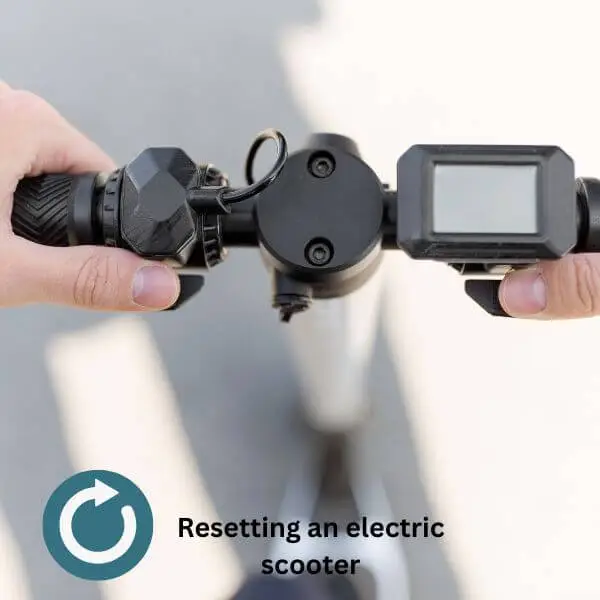
There are a few fundamental procedures you can follow to reset your electric scooter, though the procedure will vary depending on the scooter’s make and model. To reset an electric scooter, follow these general instructions:
- Find the scooter’s reset switch or button. This is usually located close to the controller or battery. For detailed instructions on where to find the reset button on your scooter, consult the owner’s manual.
- The reset is complete when you hear a beep or see a flashing light after pressing and holding the reset button or switch for a few seconds.
- Turn on your scooter after the reset is finished to check if the issue has been fixed.
- If the issue still exists after the reset, it can be a more serious one that needs additional investigation or fixes. The best course of action is to read the user guide or get in touch with the manufacturer.
Make sure you have a backup of any crucial information before resetting an electric scooter because doing so may cause some settings to be lost. Always follow the manufacturer’s directions carefully and use caution when servicing your scooter.
2. Inspect an Electric Scooter for a Kill or Arming Switch
Some electric scooters have a kill switch or arming switch, a safety device that enables you to stop or disable the motor. The location and use of the kill switch or arming switch on an electric scooter can vary depending on the scooter’s make and model, but generally, the following steps should be followed:
- Find the arming or kill switch of your scooter. This is usually located close to the controller or battery. For information on exactly where the switch is located on your scooter, consult the owner’s manual.
- Depending on the model, the switch could be a button, a toggle, or a lever.
- The motor will operate when the switch is in the “on” position. The motor will not work while the switch is in the “off” position.
- Make sure the separate key is placed correctly and turned on if your scooter comes with one.
- Refer to the instructions if you can’t find the switch or aren’t sure where it is.
It’s crucial to remember that a kill switch or arming switch can be a significant safety feature, especially while the scooter is not in use. These switches can stop unintentional starts and illegal use. Additionally, always follow the manufacturer’s directions carefully and use caution when servicing your scooter.
3. How to Fix a Scooter Battery
An electric scooter’s battery needs to be checked frequently to make sure it is operating properly. The scooter may experience power problems from a bad battery and may not be able to maintain a charge, which may reduce the scooter’s travel range.
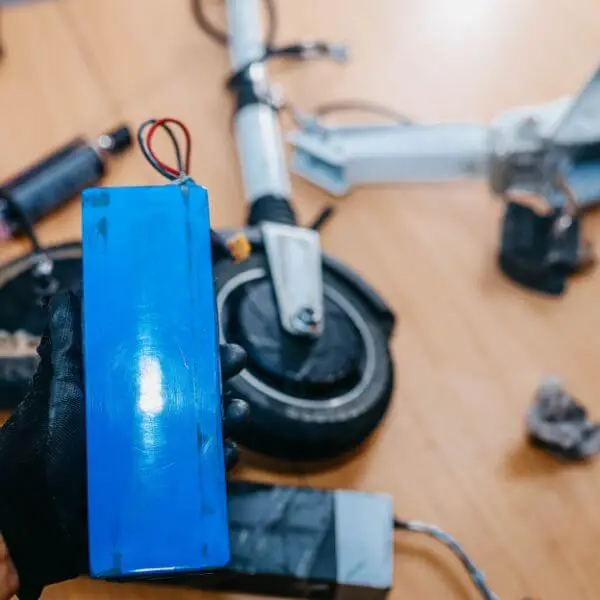
Additionally, a defective battery might reduce the scooter’s battery life or perhaps make it cease functioning completely. The scooter will always be ready to ride if the battery’s charge level and overall health are regularly monitored. This will also help the battery last longer. To reduce the potential of a fire hazard, it’s also crucial to make sure the connector is clean and the battery is secured. The below video teaches how to fix a scooter battery.
Depending on the precise problem you are having, there are several ways to fix a scooter battery, but in general, the procedure entails charging or replacing the battery. The steps to fixing a scooter battery are as follows:
- Verify the battery’s charge. If the battery is low, try charging it with the scooter’s included charger. For detailed information on how to charge your scooter’s battery, consult the manufacturer’s manual.
- It could be time to replace the battery if it won’t charge or maintain a charge.
- You’ll need to get a new battery that is compatible with the brand and model of your scooter in order to replace the old one. The manufacturer’s handbook or other resources can help you choose the right battery type and size.
- Find the battery compartment of your scooter before installing the new battery. For detailed directions on how to, consult the user guide provided by the manufacturer.
- Disconnect any cables or wires that are attached to the old battery before removing them with care.
- Put the new battery in place with caution and reattach any cables or wires that were cut from the old battery.
- To make sure everything is operating as it should, shut the battery box and take the scooter for a test drive.
It’s vital to remember that it’s always advisable to seek professional assistance if you feel uneasy or unsure about a particular fix. Additionally, always follow the manufacturer’s directions carefully and use caution when servicing your scooter.
4. Check the Fuse or Circuit Breaker on an Electric Scooter
On some electric scooters, a fuse or circuit breaker is a crucial safety component that helps shield the scooter from electrical harm brought on by power surges or short circuits. Here are several procedures for testing an electric scooter’s fuse or circuit breaker:

- Find your scooter’s fuse or circuit breaker. This is usually located close to the controller or battery. For information on the precise placement of the fuse or circuit breaker on your scooter, consult the owner’s manual.
- Depending on the scooter’s model, the fuse or circuit breaker can be a tiny, cylindrical device or a switch.
- Look for any obvious damage to the fuse or circuit breaker, such as a broken or melted fuse, or a tripped switch.
- It is necessary to replace the fuse or circuit breaker if it appears to be damaged.
- You must buy a new fuse or circuit breaker that is compatible with the make and model of your scooter in order to replace the old one. In the owner’s handbook or online, you can discover the proper fuse or circuit breaker.
- For detailed instructions on how to install the replacement fuse or circuit breaker, consult the manufacturer’s manual.
- After replacing the circuit breaker or fuse, test the scooter by turning it on to make sure everything is in working order.
It’s vital to remember that it’s always advisable to seek professional assistance if you feel uneasy or unsure about a particular fix. Additionally, always follow the manufacturer’s directions carefully and use caution when servicing your scooter.
5. Check The Wiring on The Electric Scooter
An electric scooter’s wiring needs to be examined to ensure the scooter’s correct operation and safety. Here are several procedures for inspecting an electric scooter’s wiring:
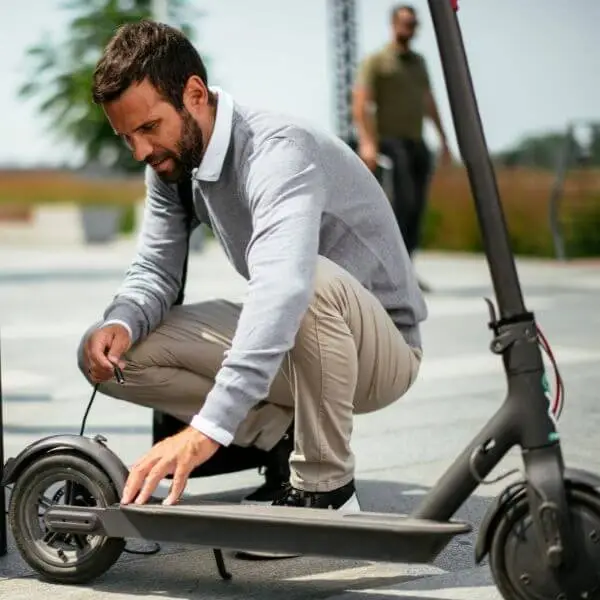
- Find every piece of wiring on your scooter. This covers the electrical connections between the battery, controller, motor, and other parts.
- Check for any obvious damage, such as exposed or frayed wires, and confirm that all connections are tight.
- If any connections are loose, check the wiring and tighten them as necessary.
- Check the wire for corrosion and, if necessary, clean the connections.
- Make sure the wire is not in contact with any moving parts or hot surfaces and look for any symptoms of overheating.
- Make sure the scooter is functioning properly by turning it on.
Additionally, it’s crucial to guarantee that the scooter is not moving when the inspection is being done.
6. Check the Speed Controller of An Electric Scooter
To make sure an electric scooter’s speed controller is working properly, it is crucial to inspect it. The scooter may experience problems with acceleration or a lack of power as a result of a broken speed controller, which could be harmful to the rider.
A defective speed controller may also shorten the scooter’s battery life and increase the risk of motor damage from overheating. The speed controller can be regularly inspected and maintained to assist guarantee the electric scooter operates safely and effectively. Here are some procedures for inspecting an electric scooter’s speed controller:
- Find the scooter’s speed controller. This is often located close to the motor or the battery. For information on where the speed controller is located on your scooter specifically, consult the owner’s manual.
- Verify the speed controller for any obvious debris or damage.
- Make sure the wiring and connections to the speed controller are secure by checking them.
- By starting the scooter, measuring its speed, and comparing it to the manufacturer’s recommendations, you can test the speed controller.
- Make sure that the scooter responds smoothly and linearly to the throttle.
- If the issue doesn’t go away, a replacement or repair of the speed controller may be necessary.
7. How to Fix Brakes on Electric Scooter
As they enable the rider to reduce speed and stop the scooter when required, properly working brakes are crucial for the rider’s safety. It may be difficult for the rider to stop the scooter if the brakes are malfunctioning, which might be risky in some circumstances. Worn or damaged brakes might also affect the scooter’s overall performance, which will make it less effective and responsive.
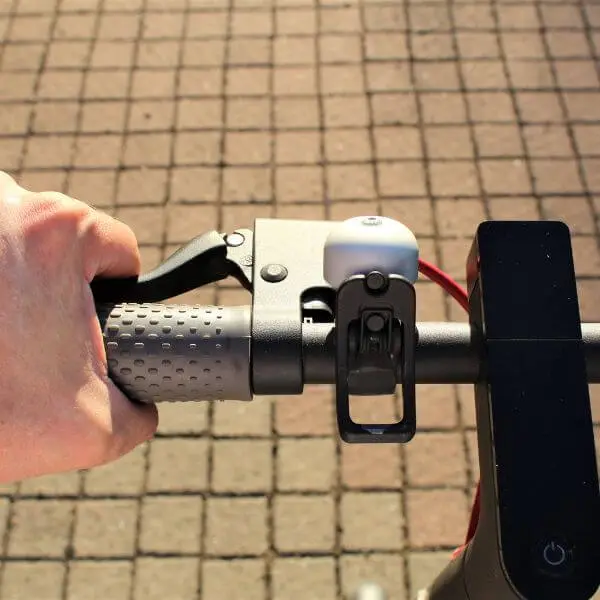
The brakes can assist guarantee the safe and effective operation of the electric scooter by being regularly checked and maintained. Checking the brake pads, brake cord, and brake fluid is part of this (if applicable). The following video teaches how to fix the brakes on an electric scooter.
Depending on the specific problem you are having, there are many ways to fix the brakes on an electric scooter, but generally speaking, the procedure entails inspecting and adjusting the brake cables and pads. Here are the procedures for repairing an electric scooter’s brakes:
- Locate your scooter’s brake pads. When the brake lever is lifted, these friction pads are pressed up against the wheels.
- Examine the brake pads for deterioration. The pads must be replaced if they are worn out.
- You must get new brake pads that are suitable for the brand and model of your scooter if you want to change the brake pads. Online or in the owner’s handbook, you can discover the proper brake pads.
- Remove the old brake pads and clean the brake caliper before replacing them.
- Make sure you properly positioned the new brake pads before carefully inserting them into the caliper.
- To check for fraying or damage, inspect the brake cables. Damaged cables will not function properly and will need to be replaced.
- You must get new brake cables that are suitable for the brand and model of your scooter if you want to replace the brake cables. The owner’s manual for the product or online resources can help you identify the proper brake cables.
- Remove the old brake cables and clean the cable housing before replacing them.
- To link the new brake cables to the brake lever and caliper, carefully thread them through the casing.
- Test the brakes by operating the scooter after installing the brake wires and pads to ensure they are functioning properly. We should adjust brake cables and pads as necessary.
8. How to Fix an Electric Scooter Wheel
It can be risky for the user when the scooter’s stability and handling are compromised by a damaged or worn wheel. A damaged wheel can also reduce the battery life of the scooter and increase the risk of the motor overheating, both of which can result in damage.
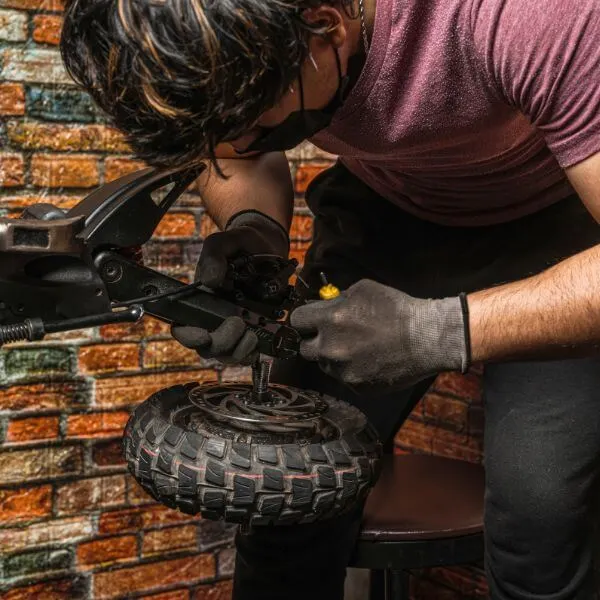
The wheel should be regularly checked and maintained to keep the electric scooter running safely and effectively. This includes inspecting the tire and wheel rim for damage, the air pressure in the wheel, and the way the wheel is fastened to the scooter. The following video shows how to fix an electric scooter wheel.
Depending on the precise problem you are experiencing, there are many ways to fix a wheel on an electric scooter, but generally, the procedure entails removing the wheel from the scooter and either fixing or replacing it. The steps for replacing a wheel on an electric scooter are as follows:
- Find the wheel that has to be fixed. The wheel is often fastened to the scooter with a bolt or a quick-release mechanism. For detailed instructions on how to take the wheel off your scooter, consult the owner’s manual.
- Once you have taken the wheel off, look for any damage, such as a flat tire, a damaged or bent wheel, or worn-out bearings.
- If you have a flat tire, you can repair the puncture or, if necessary, change the inner tube. It will be necessary to replace the wheel if it is bent or damaged.
- You must get a replacement wheel that is compatible with the make and model of your scooter in order to replace the damaged one. The manufacturer’s handbook or other resources can help you determine the correct wheel size and style.
- You should insert the axle into the center of the new wheel before it is bolted or quick-released to the scooter to complete the installation.
- You will need to replace your worn-out wheel bearings. You might wish to seek the assistance of a professional because this is a more complicated fix.
- Give the scooter a test ride after you have replaced the wheel to make sure everything is in working order.
9. How to Fix Electric Scooter Charger
The scooter’s battery may not charge properly due to a broken charger, which may reduce the scooter’s travel range. Additionally, a bad charger may result in the battery life being reduced or even in the scooter ceasing to function.
The charger should be regularly inspected and maintained to guarantee the electric scooter is running safely and effectively. This entails examining the output voltage and current of the charger, ensuring that it is correctly plugged in and linked to the scooter, and looking for any physical damage to the charger or the scooter’s charging port.
Depending on the actual problem you are having, there are many ways to fix an electric scooter charger, but generally speaking, the procedure includes testing and perhaps replacing the charger. The steps to fixing an electric scooter charger are as follows:
- Look for any apparent damage, such as frayed wires or a broken connector, on the charger and the charging cord. The cable or charger needs to be changed if there is any damage.
- Try connecting the scooter to a different outlet to check whether the issue is with the outlet and not the charger if the charger and cable seem to be in good condition.
- Unplug the charger from the wall and try inserting it into a new outlet if the scooter still won’t charge.
- If the charger is still not functioning, there might be an issue with the scooter’s charging port. Examine the charging port for debris or damage, and if required, clean it or replace it.
- If none of the aforementioned measures has succeeded in fixing the issue, the charger itself may be the culprit. It can require replacement.
10. How to Fix Electric Scooter Handlebars
A damaged or loose handlebar, which puts the user at risk, may compromise the stability and handling of the scooter. A damaged handlebar can also make riding uncomfortable or painful.
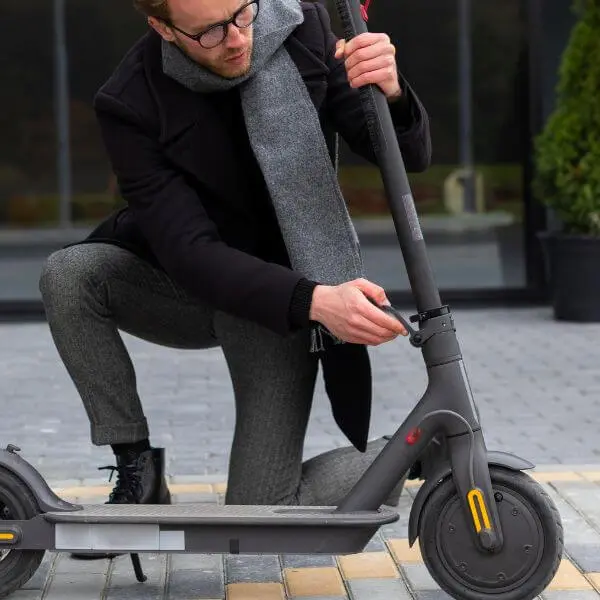
The handlebars should be regularly inspected and maintained to keep the electric scooter operating safely and effectively. This entails tightening the handlebar, ensuring that you sealed it to the scooter, and inspecting the handlebar and steering mechanism for physical damage. This video shows how to fix the electric scooter handlebars.
Typically, the procedure entails tightening slack bolts or changing out defective components. The procedure for how to fix electric scooter handlebars is as follows:
- Make sure you firmly linked the handlebars to the stem and inspect them for any obvious damage, such as a bend or crack.
- Look for any damage or loosened fasteners on the stem. The stem joins the handlebars to the scooter’s fork and frame.
- If the bolts are loose, tighten them to the recommended torque as detailed in the owner’s manual using a wrench or Allen key.
- It will be necessary to replace the stem or handlebar clamp if they are damaged.
- You must get a new stem or handlebar clamp that is suitable for the brand and model of your scooter in order to replace the old one. The manufacturer’s handbook or other resources might help you identify the correct stem or handlebar clamp.
- Remove the old stem or handlebar clamp first, then carefully slip the new one onto the scooter’s fork and frame to complete the installation.
- Check the bolts to make sure you tightened them to the correct torque after installing the replacement stem or handlebar clamp.
- By operating the scooter, check the handlebars to see if they are functioning properly. As needed, adjust the handlebars.
11. How to Fix Throttle on Electric Scooter
The scooter may struggle to accelerate or run low on power due to a broken throttle, which could be harmful to the rider. A defective throttle can also reduce the scooter’s battery life and increase the risk of the motor overheating, both of which can result in damage. The throttle can be regularly checked and maintained to promote the safe and effective functioning of the electric scooter.
This includes testing the throttle’s responsiveness, ensuring that you securely connected it to the controller, and inspecting the throttle for physical damage. The technique often entails inspecting the throttle cable and, if necessary, modifying or replacing it. Here are the procedures for repairing an electric scooter‘s throttle:
- To check for fraying or damage, inspect the throttle cable. The cable must be replaced if it is damaged.
- You must get a new throttle cable that is compatible with the make and model of your scooter in order to replace the damaged one. We can find suitable throttle cables online or in the owner’s handbook.
- Remove the old throttle cable and clean the cable housing before replacing it.
- Attach the new throttle cable to the controller or motor and the throttle lever by carefully threading it through the casing.
- Test the throttle after installing the new throttle cable by starting the scooter and making sure the throttle operates as intended when the lever is moved.
- Check for any loose connections between the controller, throttle lever, and motor if the scooter is still not reacting to the throttle lever.
- If the issue continues, it may be the controller or the motor, both of which require replacement or repair.
12. How to Fix Electric Scooter Motor
Your electric scooter’s motor is its heart and is what propels it forward. The scooter won’t move if the motor isn’t functioning. It’s possible that the issue is with the wiring, the controller, or the motor.
You can try a few things before calling a professional if the motor on your electric scooter isn’t working. To solve the issue, follow these steps:
- Make sure you fully charged your scooter before anything else. When in doubt, check the battery’s level and charge it.
- Make sure the wiring and connections to the motor are secure by checking them.
- Make sure the controller is connected and operating correctly by checking it.
- By directly supplying power to the motor, you may check to see if it operates. If the motor operates when power is applied directly, the controller or wiring may be the issue.
- To ensure that the throttle and brake levers are functioning properly and not causing the motor to go out, check their functionality.
- If the issue still exists, there might be an issue with the motor itself. It’s best to consult a specialist to identify and resolve the issue.
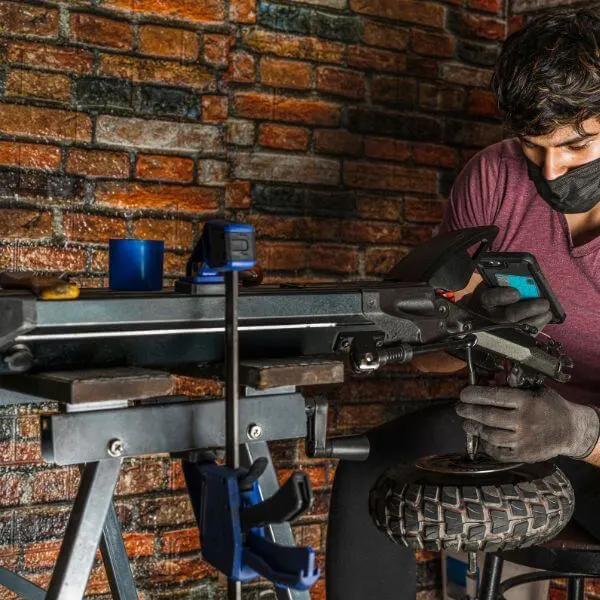
Make sure you follow any manufacturer’s specifications for tuning, oil changes, and other scheduled maintenance, and if you know how to fix an electric scooter. If anything does go wrong, be sure to act promptly to minimize any potential damage. Keep all tools and spare parts on hand so that if you do need them, they are ready to use right away.
Conclusion
Now that you have completed the necessary repairs or maintenance to get your electric scooter up and running, it’s important to keep it in good working order. Regular inspections, preventive maintenance, and prompt repairs of any issues will ensure that your electric scooter remains safe and reliable for years to come. By following these simple steps on how to fix an electric scooter, you can make sure your electric scooter always works safely and reliably whenever you turn the key.
Blog
Rainy Days and Rides: Can Ninebot Scooter Get Wet?
Can Ninebot Scooter Get Wet? Don’t let rain ruin your ride! Learn about Ninebot Scooter’s water resistance features and steps to keep it safe in wet conditions.

Can Ninebot Scooter Get Wet? Don’t let rain ruin your ride! Learn about Ninebot Scooter’s water resistance features and steps to keep it safe in wet conditions.
Have you ever wondered if your Ninebot scooter can survive the rain? It’s a common concern for many riders, as no one wants to risk damaging their valuable mode of transportation. In this article, we will explore the question “Can Ninebot scooter get wet?” and the potential risks of getting your Ninebot wet and provide tips on how to protect it.
Can Ninebot Scooter Get Wet?
Ninebot scooters are not entirely waterproof, but they are water-resistant. I do not advise it to expose a Ninebot scooter to water as it is not waterproof. The electrical components can be damaged and affect the performance of the scooter. If you must use the scooter in wet conditions, I recommend taking precautions such as using a waterproof cover or avoiding puddles. Keeping the scooter dry will help preserve its functionality and prevent potential damage. Always follow the manufacturer’s guidelines and recommendations to ensure the proper maintenance of your Ninebot scooter.

Table of Contents
Here is a table summarizing the water resistance of Ninebot scooters:
| Ninebot Model | Water Resistance of Ninebot Scooter | Riding Conditions |
|---|---|---|
| Segway Ninebot | Water-resistant | Light rain or splashes |
| Ninebot ES2 | I do not recommend using it in the rain | – |
| Ninebot MAX G30 | Can resist a sustained, low-pressure water jet spray | Light to moderate rain |
They do not design most Ninebot models to be used in heavy rain or submerged in water, and riding them in such conditions can cause damage to the components. However, light rain or splashes should not cause significant problems if the scooter is moving. The Ninebot MAX G30 is one of the best water-resistant scooters to drive in the rain, but riders should still be careful of deep puddles and slippery surfaces.
What is a Ninebot Scooter?
A Ninebot scooter is a type of electric personal transportation device that is designed for short-distance travel. It is a compact and lightweight vehicle with two wheels and a handlebar for steering. A rechargeable battery powers the scooter and comes equipped with features such as adjustable speed settings, LED lights, and a mobile app for control and monitoring. I value Ninebot scooters for their durability, maneuverability, and environmentally friendly design.
It is important to always consult the user manual for specific guidelines on water resistance and to avoid exposing the Ninebot scooter to excessive moisture to maintain its longevity and performance.
What Are the Risks of Getting a Ninebot Scooter Wet?
Exposing a Ninebot scooter to water can lead to various risks, such as damage to its electrical components, corrosion, and decreased performance. Water can enter the scooter’s internal circuitry, causing short circuits or malfunctions. Over time, corrosion can also affect the scooter’s metal parts, resulting in rust and deterioration. Riding a wet Ninebot scooter can compromise its traction, stability, and braking efficiency, increasing the chances of accidents.
To prevent these risks, it is crucial to protect the scooter from water damage by using a waterproof cover, avoiding riding in heavy rain, and thoroughly drying and storing it in a dry place. If the scooter comes into contact with water, you should immediately turn it off, dry it thoroughly, and inspect for any damage before using it again. As an alternative to riding a wet Ninebot scooter, consider using public transportation or other forms of transportation during rainy weather.
How to Protect Your Ninebot Scooter from Water Damage?
As a proud owner of a Ninebot scooter, you may wonder how to protect your beloved ride from water damage. While these scooters withstand some moisture, prolonged exposure to water can cause serious damage. Now I will discuss four ways to protect your Ninebot scooter from water damage. From using a waterproof cover to proper storage techniques, we’ve got you covered so you can keep riding worry-free.
1. Use a Waterproof Cover
Using a waterproof cover is crucial for protecting your Ninebot scooter from water damage. Here are the steps to follow:
- Choose a high-quality waterproof cover specifically designed for Ninebot scooters.
- Make sure the cover completely covers the scooter, including the handlebars and wheels.
- Secure the cover tightly to prevent water from seeping in.
- Regularly check the cover for any tears or damage and replace if necessary.
Fact: A waterproof cover not only shields your scooter from rain but also guards it against dust, dirt, and UV rays.
2. Avoid Riding in Heavy Rain
For riding a Ninebot scooter in heavy rain, it is best to avoid it altogether to prevent potential damage and risks. Here are some steps to take:
- Check the weather forecast before heading out.
- If you expect heavy rain, it is advisable to use alternative modes of transportation.
- If caught in unexpected rain, it is important to find shelter or wait for the rain to subside.
- To protect the scooter from the rain, use a waterproof cover or store it in a dry place.
- If you must ride in light rain, it is crucial to be cautious and reduce speed to maintain control.
Remember, the safety of both the rider and the scooter should always come first. Stay dry and ride responsibly!
3. Dry the Scooter Thoroughly after Use
To ensure the longevity and performance of your Ninebot scooter, it’s important to dry it thoroughly after each use. Follow these steps:
- Use a dry cloth to wipe down the entire scooter, paying special attention to areas that may have accumulated moisture.
- Remove any excess water by gently shaking the scooter or using a soft brush to dry hard-to-reach areas.
- Avoid exposing the scooter to direct sunlight or heat sources as it dries, as this may cause damage.
- Leave the scooter in a well-ventilated area to air dry completely before storing it.
Fact: Properly drying your Ninebot scooter after use helps prevent rusting and prolongs its lifespan.
4. Store the Scooter in a Dry Place
To ensure the longevity of your Ninebot scooter, it is crucial to store it in a dry place. Here are some steps to follow:
- Choose an indoor storage location to protect the scooter from rain, humidity, and moisture.
- Use a scooter cover to shield it from dust and potential water exposure.
- Ensure the storage area has proper ventilation to prevent condensation buildup.
- Avoid storing the scooter near windows or doors that could allow water to seep in.
By following these steps, you can safeguard your Ninebot scooter from water damage and maintain its performance.
Read the review of Hiboy S2 Pro electric scooter.
What to Do If Your Ninebot Scooter Gets Wet?
Accidents happen, and sometimes your Ninebot scooter may end up getting wet. Whether it’s from rain, a puddle, or a spill, water can damage your scooter if not handled properly. Now, I’ll discuss the steps to take if your Ninebot scooter gets wet. From turning off the scooter immediately to thoroughly drying it and checking for damage, we’ll cover everything you need to know to keep your scooter safe and functional.
1. Turn Off the Scooter Immediately
If your Ninebot scooter gets wet, it is crucial to turn it off immediately to prevent further damage. Here are the steps to follow:
- Power off the scooter by pressing the power button.
- Disconnect the battery to avoid any electrical short circuits.
- Remove any excess water by gently patting the scooter with a dry cloth.
- Let the scooter air dry completely before attempting to turn it back on.
2. Dry the Scooter Thoroughly
To ensure your Ninebot scooter stays in top condition, it is crucial to properly dry it after use. Follow these steps:
- Take a clean and dry cloth and wipe down the entire scooter, including the handlebars, deck, and wheels.
- Be sure to pay extra attention to any areas where water may have accumulated, such as around the charging port or under the fender.
- If needed, use a compressed air canister or a hairdryer on a low, cool setting to remove any remaining moisture.
- Allow the scooter to air dry in a well-ventilated area for a few hours before storing it.
True story: One rainy day, I made the mistake of forgetting to dry my Ninebot scooter after riding it. The following day, I discovered that water had seeped into the control panel, causing it to malfunction. I had to take it to a repair shop and learned the importance of thoroughly drying the scooter to prevent water damage.
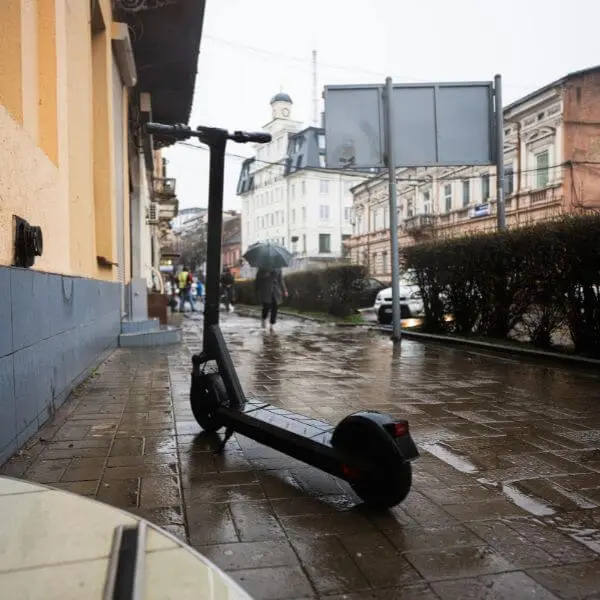
3. Check for Damage
- After your Ninebot scooter gets wet, it’s important to carefully inspect for any potential damage to ensure safe operation.
- Check all electrical components for any signs of water damage, such as corrosion or rust.
- Examine the battery and charging port to ensure they are completely dry and free from any moisture.
- Inspect the tires and brakes for any water-related issues, such as reduced traction or damage.
- Test the functionality of the scooter, including acceleration, braking, and steering, to ensure there are no issues.
- If you notice any damage, I highly recommend contacting the manufacturer or a certified repair service for further help.
Is it Safe to Ride a Wet Ninebot Scooter?
Riding a wet Ninebot scooter can be hazardous and should be avoided. Wet surfaces can affect the traction and stability of the scooter, increasing the risk of accidents and injuries. Water can also cause damage to the scooter’s electrical components, resulting in malfunctions. I recommend it to wait for both the scooter and the ground to dry before riding. If you get your Ninebot scooter wet, be sure to thoroughly dry it before attempting to ride again. Safety should always be the top priority when using any type of electric scooter.
Here is a true historical anecdote:
In 2019, a man in California rode his Ninebot scooter after a heavy rainstorm. Despite being cautious, he lost control on a wet patch and suffered a serious injury. This incident serves as a reminder of the importance of avoiding riding a wet Ninebot scooter to ensure personal safety.
What Are the Alternatives to Riding a Ninebot Scooter in the Rain?
To avoid damaging the electrical components of a Ninebot scooter and to stay safe and dry, there are several alternatives to consider when traveling in rainy weather:
- Public transportation: Buses, trains, or trams can reach your destination.
- Ride-sharing: We can use services like Uber or Lyft as a means of transportation during wet weather.
- Car rental: Renting a car can provide a reliable and comfortable option for traveling on rainy days.
- Walking or jogging: For shorter distances, walking or jogging can be a healthy and weather-resistant alternative.
- Cycling: We can use a waterproof bicycle or rain gear as a weather-resistant option.
Conclusion
“Can Ninebot scooter get wet?” is a crucial question for scooter owners like me. After thorough research and personal experience, it’s clear that exposing your Ninebot scooter to water is not advisable. Water can damage crucial components and compromise the scooter’s functionality. To ensure the longevity of your investment, it’s best to keep your Ninebot scooter dry and protected from wet conditions. Remember, prevention is key to maintaining the performance and safety of your scooter.
Frequently Asked Questions
Can Ninebot Scooter Get Wet?
A Ninebot scooter is water-resistant and can handle light rain or splashes. However, I do not recommend submerging the scooter in water or riding it in heavy rain as it may damage the internal components.
What Happens If a Ninebot Scooter Gets Wet?
If a Ninebot scooter gets wet, it may malfunction or stop working temporarily. Water can damage the electrical components of the scooter, causing it to have issues with acceleration, braking, or turning. It is best to dry the scooter thoroughly before attempting to use it again.
How Can I Protect My Ninebot Scooter from Getting Wet?
To protect your Ninebot scooter from getting wet, you can invest in a waterproof cover or store it indoors or under a shelter when not in use. You can also consider applying a silicone spray or water-resistant coating to the scooter’s external parts to provide an extra layer of protection.
Can I Ride My Ninebot Scooter through Puddles or Wet Roads?
I do not recommend riding your Ninebot scooter through puddles or wet roads as it can damage the scooter’s internal components. Water can also make the road slippery, increasing the risk of accidents. It is best to avoid wet surfaces and find an alternate route if possible.
What Should I Do If My Ninebot Scooter Gets Wet?
If your Ninebot scooter gets wet, the first thing you should do is turn it off and disconnect the battery. Then, dry off the scooter with a towel or cloth and let it air dry for several hours. Avoid using a hairdryer or any heat source to dry the scooter as it may cause further damage.
Is the Warranty Void If My Ninebot Scooter Gets Wet?
Most Ninebot scooter warranties do not cover water damage, so if your scooter gets wet, the warranty may be void. It is essential to read the warranty terms and conditions before purchasing a Ninebot scooter and follow the manufacturer’s guidelines to avoid any issues with warranty claims.
Blog
The Need for Speed: How Fast Are the Bird Scooters?
Discover how fast are the Bird scooters in this revealing exploration. Zip through cityscapes with unmatched efficiency, ensuring a swift ride.
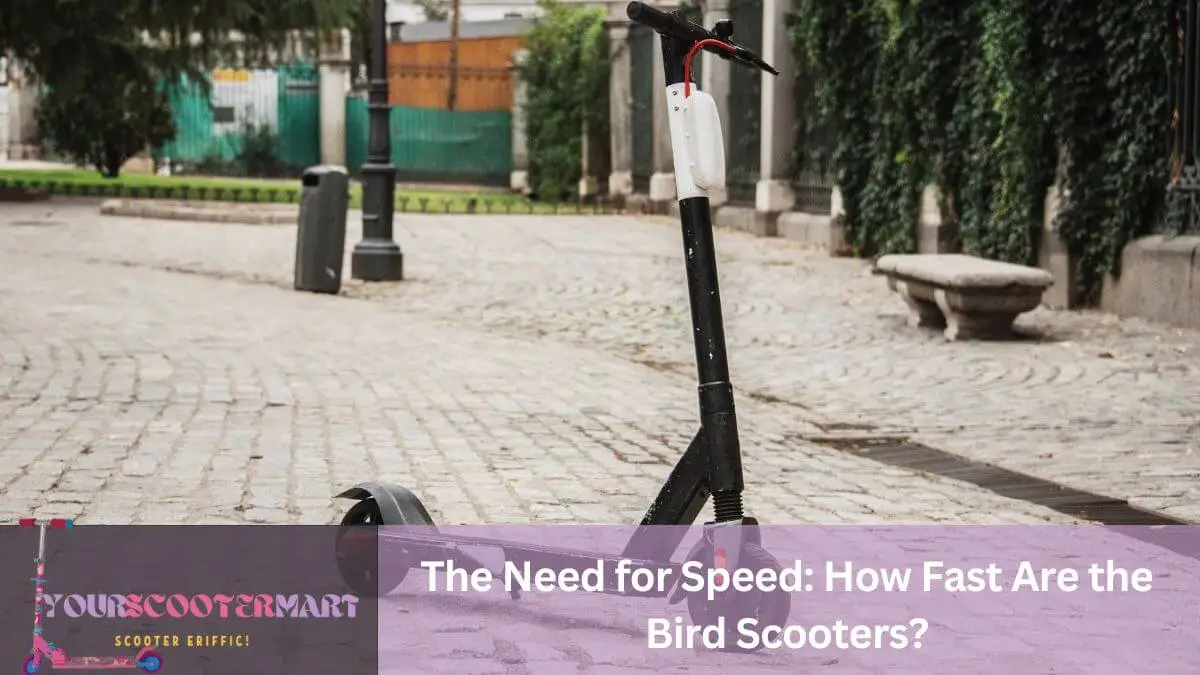
Bird scooters have a maximum speed of 15 to 18 miles per hour
Looking for a quick and convenient way to get around the city? Then you’ve probably heard of the popular electric scooters known as Bird scooters. But just how fast are the bird scooters? With concerns over safety and regulations, it’s important to understand the speed capabilities of these scooters. It might surprise you to learn just how speedy they can be.
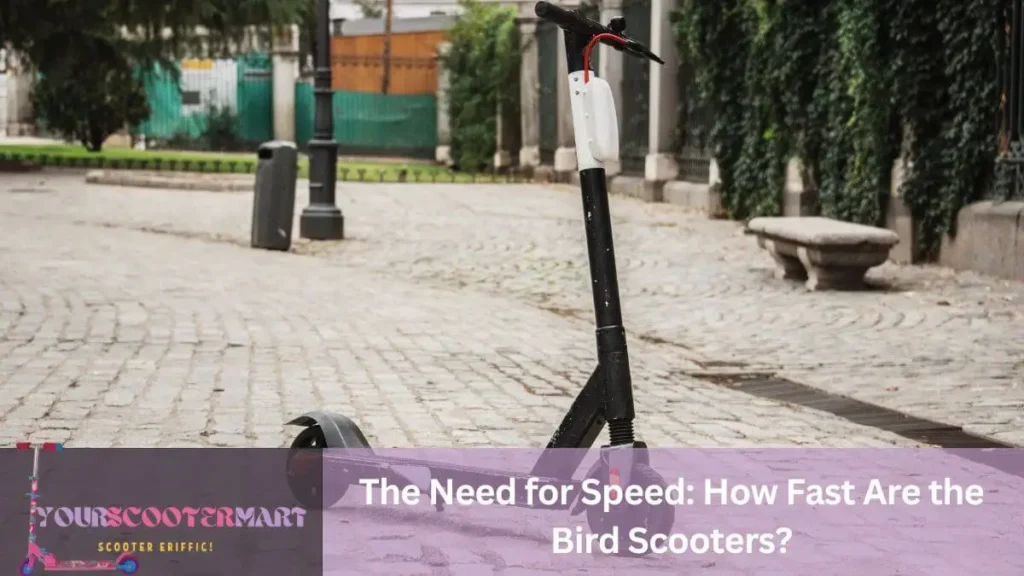
Table of Contents
How Fast are Bird Scooters?
Here is a table showing the top speed of Bird scooters
| Maximum speed of Bird Scooters | |
|---|---|
| Model | Maximum Speed |
| Bird Air | 16 miles per hour |
| Bird One | 18 miles per hour |
| Other Bird scooters | 15 to 17 miles per hour |
| Bird E-Scooters in pedestrian-dense areas | Automatically reduced to 8 miles per hour |
What Is the Average Speed of a Bird Scooter?
The average speed of a Bird scooter is approximately 15 miles per hour. The specific speed may vary depending on factors such as the weight of the rider, the condition of the road, and the level of the battery. They designed Bird scooters for brief trips and urban commuting, and are not intended for high-speed travel. It is crucial to adhere to local traffic laws and ride responsibly when using a Bird scooter.
What are Bird Scooters?
Bird scooters are electric scooters that you can rent through a mobile app. They are a popular part of the shared micro-mobility trend, offering a convenient and eco-friendly mode of transportation in urban areas. Users can easily locate and unlock the scooters using the app, ride them to their destination, and then park them in designated areas.
These scooters have quickly gained popularity for short-distance travel, helping to reduce traffic congestion and carbon emissions. They have become a common sight in many cities, with thousands of riders using them daily to navigate their way around town. Another example of scooters that you can rent are Lime scooters.
| Features of Bird scooters | |
|---|---|
| Feature | Description |
| Top Speed | Approximately 18 miles per hour. |
| Range | Up to 25 miles. |
| Motor | 36V, 300 W. |
| Battery | 12.8 Ah, 36 V, 473.6 Wh. |
| Braking System | Electronic front regenerative brake system. |
| Safety Features | Ultra-efficient brakes, ergonomic firm-grip handlebars, texturized deck, GPS connection, and anti-theft protection. |
How Do Bird Scooters Operate?
Bird scooters operate through a simple process that allows users to easily rent and ride them. Here are the steps involved in how Bird scooters operate:
- Locate a nearby Bird scooter using the mobile app.
- Scan the QR code on the scooter to unlock it.
- Adjust the kickstand and put on a helmet for safety.
- Begin riding the scooter by pushing off with one foot and using the throttle to speed up.
- Observe all traffic laws and regulations while riding.
- Once you reach your destination, park the scooter in a designated area and end your ride through the app.
- Lock the scooter properly before leaving.
To ensure a smooth and enjoyable experience with Bird scooters, here are some suggestions:
- Always wear a helmet and follow local traffic laws.
- Charge the scooter responsibly to avoid running out of battery during your ride.
- Report any issues or damages to Bird customer support.
- Be considerate and park the scooter in designated areas to avoid blocking pathways.
What Are The Speed Limits For Bird Scooters?
With electric scooters, one of the first questions that may come to mind is “How fast can they go?” While the top speed of a scooter may vary depending on the model and manufacturer, there are also specific speed limits in place for safety reasons.
Are There Different Speed Limits in Different Countries and Cities?
Yes, there are varying speed limits for Bird scooters depending on the city. Each city has its own set of regulations regarding the use of e-scooters, which includes speed limits. While some cities may have a standard speed limit for all electric scooters, others may have specific limits for certain areas or types of roads. Riders must be mindful of and adhere to the speed limits enforced by the city they are in guaranteeing their safety and abide by local laws. Disregarding speed limits can lead to fines or other penalties.
Bird Scooters are available in many countries outside the United States, including Canada, France, Germany, Spain, and Australia. It’s important to note that the speed limits for Bird Scooters may differ in each country because of local regulations. For instance, in Australia, the maximum speed for electric scooters on public roads is 25 km/h (15.5 mph).
To ensure both safety and compliance with local transportation authorities, riders must familiarize themselves with the laws and regulations regarding speed limits when riding Bird Scooters in other countries. Riders should also take into consideration factors such as traffic conditions, road conditions, and pedestrian density for a safe and enjoyable experience while riding abroad.
What Factors Affect The Speed Of Bird Scooters?
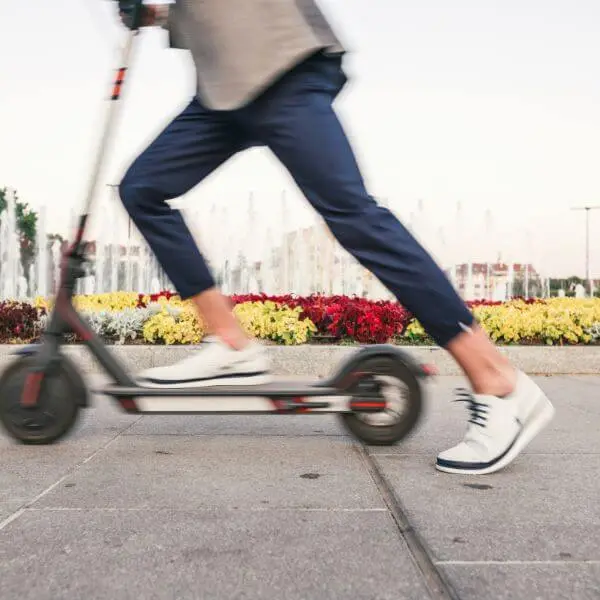
Have you ever wondered how fast those popular Bird scooters can go? Well, the answer is not as simple as you may think. Several factors can affect the speed of a Bird scooter. Now I will discuss these factors and how they can affect the overall speed of the scooter. From battery life to terrain to the weight of the rider, each element plays a role in determining just how fast a Bird scooter can go. These also prolong the life of electric scooters.
Let’s dive in to explore the various factors that contribute to the speed of these trendy modes of transportation.
1. Battery Life
Battery life is an essential aspect to consider when using Bird scooters. To ensure a smooth ride and maximize battery performance, please follow these steps:
- Before starting your ride, always check the battery level.
- Try to avoid excessive acceleration and braking, as this can quickly drain the battery.
- Stick to the recommended weight limits to prevent overburdening the battery.
- Avoid riding on steep terrains or rough surfaces, as this can significantly increase battery usage.
- Be sure to charge the scooter regularly and avoid letting the battery drain completely.
A friend of mine learned the hard way when they rented a Bird scooter without checking the battery life. Unfortunately, the battery died midway through their ride, leaving them stranded far from their destination. Since then, they always make it a point to check the battery level before starting their journey.
Pro-tip: To prolong battery life, maintain a moderate speed and avoid sudden accelerations.
2. Terrain
With riding Bird scooters, the terrain can have a significant impact on your speed and overall experience. To ensure a safe and enjoyable ride, here are a few steps to consider:
- Be aware of the terrain: Pay attention to the type of surface you’re riding on, whether it’s smooth pavement, gravel, or hills.
- Adjust your speed: Slow down when riding on uneven or slippery terrain to maintain stability and prevent accidents.
- Take turns carefully: Reduce your speed and approach turns cautiously, especially on uneven or loose surfaces.
- Watch out for obstacles: Be mindful of potholes, bumps, or debris on the road that could cause you to lose control.
- Choose the right scooter model: Consider renting a scooter with larger wheels or enhanced shock absorption if you plan to ride on rough terrain frequently.
In 2021, Bird introduced an upgraded scooter model designed specifically for off-road adventures. With improved suspension and rugged tires, riders can now confidently tackle various terrains, including dirt trails and grassy parks, while enjoying a smooth and exhilarating ride. So, whether you’re exploring urban streets or venturing off the beaten path, Bird scooters have you covered.
3. Weight of Rider
The weight of the rider is a crucial factor that affects the speed and performance of Bird scooters. To ensure a safe and optimal riding experience, here are some steps to consider regarding rider weight:
- Check the weight limit: Before riding a Bird scooter, always check the weight limit specified by the company. Exceeding this limit can affect the stability and speed of the scooter.
- Choose the right scooter: For heavier riders, I recommend selecting a scooter model that can accommodate higher weights.
- Adjust riding style: Be mindful of your riding style and try to distribute your weight evenly on the scooter. This can help maintain balance and optimize the scooter’s performance.
- Consider battery life: Heavier riders may experience shorter battery life due to increased power consumption. Plan your rides accordingly and be aware of the scooter’s battery level.
- Follow safety guidelines: It is crucial to adhere to all safety guidelines provided by Bird, regardless of your weight. This includes wearing a helmet, following traffic rules, and riding responsibly.
Are There Any Safety Concerns With Bird Scooters?
As the popularity of electric scooters continues to rise, more and more people are turning to services like Bird for convenient and eco-friendly transportation. With this increase in usage also comes the question of safety.
Now I will discuss potential safety concerns with Bird scooters, including accidents and injuries that have occurred, as well as potential malfunctions of the scooters themselves. By understanding these risks, users can make informed decisions about their safety when riding Bird scooters.
1. Accidents and Injuries
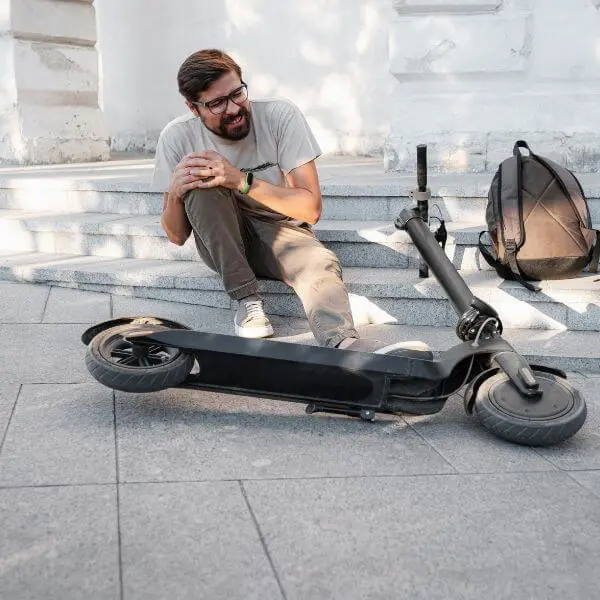
Accidents and injuries can happen while using Bird scooters. To ensure safe riding, follow these steps:
- Wear a helmet to protect your head in case of a fall or collision.
- Observe traffic rules and signals, just like when riding a bicycle or driving a car.
- Ride in designated areas and avoid sidewalks to minimize the risk of colliding with pedestrians.
- Be cautious when riding at night and ensure your scooter has proper lighting.
- Regularly inspect your scooter for any malfunctions or issues before riding.
- Keep a safe distance from vehicles and other obstacles to avoid accidents.
- Stay focused and avoid distractions such as using your phone while riding.
2. Scooter Malfunctions
Scooter malfunctions can pose safety risks for riders. To ensure safe and responsible riding, follow these steps:
- Regularly inspect the scooter for any visible damage or loose parts.
- Check the brakes before each ride to ensure they are working properly.
- Pay attention to any unusual noises or vibrations while riding, as they may show a mechanical issue.
- If you encounter a malfunction during your ride, safely pull over to the side of the road and turn off the scooter.
- Contact the Bird Scooters customer support immediately to report the issue and seek help.
- Do not fix the malfunction yourself, as it may cause further damage or put you at risk.
- Wait for the customer support team to provide instructions on what to do next.
- Once they resolve the scooter malfunctions, only continue riding if you feel confident in the scooter’s safety.
What Are The Benefits of Bird Scooters?
Bird scooters offer many benefits for both urban commuters and travelers. These include:
- Convenience: With their widespread availability in many cities, Bird scooters provide a convenient mode of transportation for quick trips.
- Cost-effective: Compared to other transportation options, Bird scooters are a relatively inexpensive choice, making them a cost-effective way to get around.
- Eco-friendly: By using electric scooters, riders can help reduce carbon emissions and promote a cleaner environment.
- Timesaving: Bird scooters can help riders avoid traffic congestion, allowing them to easily navigate through crowded areas and save time during their commute.
- Health and wellness: Riding a Bird scooter provides a low-affected exercise opportunity, contributing to improved physical fitness and overall well-being.
True story: A friend of mine recently used a Bird scooter to navigate through downtown traffic and arrived at her meeting on time. The convenience and ease of use pleasantly surprised her, and now considers Bird scooters her go-to mode of transportation for short distances in the city.
What Are The Drawbacks of Bird Scooters?
While Bird scooters offer convenience and flexibility for short-distance travel, there are also some drawbacks to consider.
- Safety concerns: Some users may not always wear helmets or follow traffic rules, increasing the risk of accidents.
- Parking issues: We often leave scooters in random or obstructive places, causing inconvenience for pedestrians and other road users.
- Charging and maintenance: Maintaining a fleet of scooters requires regular charging, repairing, and redistributing, which can be time-consuming and costly.
Despite these drawbacks, Bird scooters have become popular in many urban areas because of their accessibility and affordability. In fact, since their launch in 2017, Bird has expanded to over 100 cities worldwide.
How Can Riders Ensure Safe and Responsible Riding of Bird Scooters?
To ensure the safe and responsible riding of Bird scooters, riders should follow these steps:
- Wear a helmet to protect your head in case of accidents.
- Observe traffic rules, including stopping at red lights and yielding to pedestrians.
- Ride at a safe and reasonable speed, considering the environment and other road users.
- Be aware of your surroundings and expect potential hazards or obstacles.
- Use designated bike lanes when available and avoid riding on sidewalks or crowded pedestrian areas.
- Do not ride under the influence of alcohol or drugs, as it impairs judgment and reaction time.
- Park scooters in designated areas and avoid blocking walkways or obstructing traffic.
- Report any accidents, issues, or damages to Bird for prompt resolution.
Conclusion
“How fast are the Bird scooters?” is a question that underscores the notable speed and efficiency these electric rides provide. Navigating through urban environments with swiftness, Bird scooters offer a rapid and convenient mode of transportation, catering to the need for quick and efficient travel in urban settings. Riders can experience the thrill of speed while reaching their destinations promptly, making Bird scooters a popular choice for those seeking a fast and convenient urban mobility solution.
Frequently Asked Questions
-
How fast are the Bird scooters?
According to the company, Bird scooters can reach a maximum speed of 18 miles per hour.
-
Are the Bird scooters faster than other modes of transportation?
It depends on the distance and traffic conditions. In busy cities with heavy traffic, Bird scooters may be faster than cars or public transportation.
-
What factors can affect the speed of a Bird scooter?
Factors can affect the speed of a Bird scooter such as the rider’s weight, terrain, and battery life.
-
Is there a speed limit for Bird scooters?
Yes, Bird scooters have a built-in speed limit of 15 miles per hour to ensure rider safety.
-
Can the speed of a Bird scooter be adjusted?
No, the speed of a Bird scooter is not adjustable. They set it at a maximum speed of 15 miles per hour for safety reasons.
-
How can I find out the speed of a Bird scooter in my area?
You can use the Bird app to locate and unlock a nearby Bird scooter, and the app will display the current speed of the scooter during your ride.
Blog
How Long Do Electric Scooters Last? Unveiling the Secrets
Unleash the secret lifespan of electric scooters! 🛴✨ Discover how long do electric scooters last and ensure your wheels go the extra mile! 🔋#ScooterLongevity

Are you wondering about the lifespan of an electric scooter? With the rise in popularity of this mode of transportation, it’s important to understand how long do electric scooters last before needing to be replaced. In this article, I will dive into the factors that affect its lifespan and provide useful information to help you make an informed decision.
On average, an electric scooter can last anywhere between 3 to 5 years. The lifespan of an electric scooter depends on various factors such as battery type and age, charging habits, temperature, brand, rider weight, quality of components, and care and maintenance. The more often you ride your scooter, the faster its components will wear down, including the battery, motor, and tires. Proper care and maintenance can extend the lifespan of an electric scooter.

Table of Contents
What Are Electric Scooters?
Electric scooters are motorized vehicles that are powered by electricity and designed for brief trips and urban commuting. They offer a more environmentally friendly option compared to traditional transportation methods. Equipped with rechargeable batteries and an electric motor, electric scooters can travel at various speeds depending on the model. They are popular for transportation in busy cities because of their compact size and easy maneuverability.
As the use of electric scooters continues to grow, many cities have implemented scooter-sharing programs, making them easily accessible to the public. Electric scooters provide a convenient and sustainable mode of transportation for those looking to reduce their carbon footprint.
How Long Do Electric Scooters Last?
| Lifespan of electric scooters | |
|---|---|
| Electric scooter | Lifespan |
| Average lifespan of an electric scooter | 3 to 5 years |
| Lifespan of rental electric scooters | 3 to 6 months |
| Lifespan of personal electric scooters | up to 3 years |
| Lifespan of electric scooter batteries | 300 to 500 full charge cycles, which usually take 2 to 3 years for the average user |
| Parts that tend to break early | battery, tires, rare fender |
| Parts that can be replaced | Parts that can be replaced |
| Factors affecting lifespan | make and model, quality of components, care, and maintenance |
The lifespan of an electric scooter depends on several factors, including usage, maintenance, and battery life. Here are some steps to help determine how long an electric scooter can last:
- Check the manufacturer’s specifications to see the estimated lifespan.
- Consider the quality of the scooter – higher-quality scooters have a longer lifespan.
- Consider the frequency and duration of usage – heavy daily use may shorten the lifespan.
- Maintain the scooter properly, including regularly cleaning and inspecting it.
- Monitor the battery’s health and follow best practices for charging and storage.
What Factors Affect the Lifespan of an Electric Scooter?
| What Factors Affect the Lifespan of electric scooters | |
|---|---|
| Factors Affecting the Lifespan of Electric Scooters | Information |
| Battery type and age | The type of battery used in an electric scooter can affect its lifespan. Lead-acid batteries have a shorter lifespan of about 1-2 years compared to Lithium-ion batteries, which can last up to 3 years. The battery’s lifespan is also affected by the number of full charge cycles it undergoes. Which is usually around 300-500 cycles. |
| Charging habits | The frequency and depth of discharge during charging can also affect the battery’s lifespan. Charging the battery every day can cause it to degrade faster than charging it once a week. Similarly, discharging the battery to almost empty regularly can cause more wear and tear than using only half its capacity before recharging. It is recommended to keep the battery’s charge level between 20% and 80% to maximize its lifespan. |
| Temperature | Extreme temperatures can also affect the battery life of an electric scooter. In hot temperatures, the battery can overheat, reducing its lifespan. Similarly, in cold temperatures, the battery can lose its charge faster, reducing the range of the electric scooter. |
| Rider weight | The rider’s weight is another factor that can impact the battery life of an electric scooter. Heavier riders can put more strain on the battery and motor, reducing their lifespan. |
| Quality of components | The make and model of the electric scooter, as well as the quality of its components, can affect its lifespan. High-quality components tend to last longer and require less maintenance than low-quality ones. |
| Care and maintenance | Proper care and maintenance can also extend the lifespan of an electric scooter. Regularly checking and tightening nuts and bolts, lubricating wheels and handlebars, and replacing worn-out accessories can help keep the scooter in good condition. |
Various factors can affect the lifespan of an electric scooter. These also include:
- Quality: Electric scooters with high-quality and durable components are likely to have a longer lifespan.
- Usage: The frequency and intensity of use can also affect the scooter’s lifespan. I recommend regular and moderate usage for optimal longevity.
- Maintenance: Proper maintenance practices, such as regular cleaning, tire inflation, and lubrication, can help prolong the scooter’s lifespan.
- Battery: The lifespan of the battery is a crucial factor in determining the overall lifespan of the scooter. Quality batteries and proper charging habits can extend its life.
- Environmental conditions: Exposure to extreme temperatures, moisture, and rough terrain can affect the scooter’s lifespan. It is best to avoid these conditions to ensure the scooter lasts as long as possible.
How to Prolong the Lifespan of an Electric Scooter?
As electric scooters become increasingly popular for their convenience and eco-friendliness, it’s important to understand how to care for them to ensure their longevity. Now I will discuss ways to prolong the lifespan of your electric scooter. From proper maintenance techniques to avoid overcharging, these tips will help you get the most out of your electric scooter. We will also touch on storing your scooter in a safe place to prevent damage and extend its lifespan.
1. Proper Maintenance
Proper maintenance is crucial for maximizing the lifespan of an electric scooter. Here are some key steps to ensure its longevity:
- Clean regularly: Remove dirt and debris to prevent damage to the scooter’s components.
- Check tire pressure: Maintain optimal tire pressure for better performance and to avoid unnecessary wear and tear.
- Tighten screws and bolts: Regularly check and tighten any loose screws or bolts to prevent them from falling out or causing damage.
- Keep the battery charged: Follow the manufacturer’s guidelines for charging the battery and avoid overcharging.
- Store in a safe place: Protect the scooter from extreme temperatures, moisture, and potential theft by storing it in a secure location.
By following these maintenance steps, you can ensure that your electric scooter lasts longer and performs optimally.
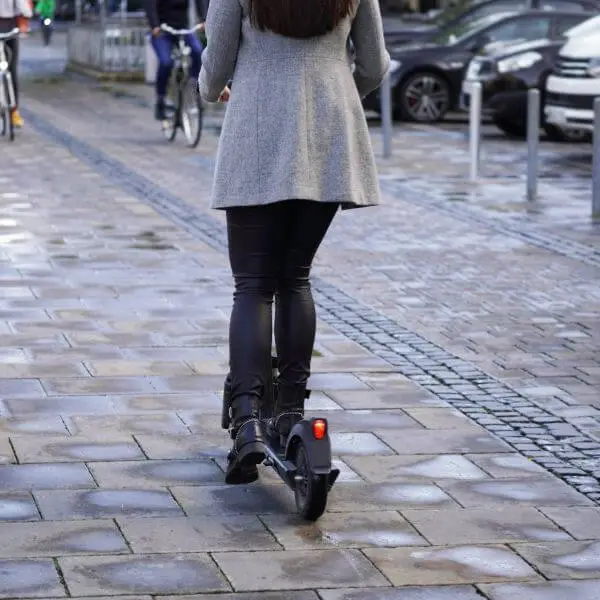
2. Avoid Overcharging
Overcharging can significantly affect the lifespan of an electric scooter. To avoid this, follow these steps:
- Use the charger provided by the manufacturer and ensure it is compatible with your scooter.
- Read the scooter’s manual to determine the recommended charging time and avoid overcharging.
- Avoid leaving the scooter plugged in for extended periods after it has reached full charge.
- Unplug the charger as soon as the battery is fully charged.
- Avoid charging the scooter overnight or for longer than necessary.
3. Store in a Safe Place
Storing your electric scooter in a safe place is crucial to prolong its lifespan and prevent damage or theft. Here are some steps to consider:
- Choose a secure location: Find a space that is protected from extreme weather and potential theft.
- Invest in a cover: Use a scooter cover to shield it from dust, moisture, and UV rays.
- Avoid direct sunlight: Prolonged exposure to sunlight can cause fading or damage to the scooter’s components.
- Keep away from water: Ensure that you store your scooter in a dry area to prevent water damage.
- Secure it: Use a sturdy lock or chain to secure your scooter to a fixed object to deter theft.
What Are the Signs That an Electric Scooter Needs to Be Replaced?
As with any mode of transportation, electric scooters have a limited lifespan. However, it’s difficult to determine when it’s time to replace your electric scooter. In this section, I’ll discuss the key signs that your electric scooter may need to be replaced. I’ll cover the decrease in battery life, frequent breakdowns, and overall wear and tear on different parts of the scooter. By understanding these indicators, you can better assess when investing in a new electric scooter is time.
1. Decreased Battery Life
Experiencing a decrease in battery life with your electric scooter is a common issue, but there are steps you can take to address it:
- Regular Charging: Charge the battery regularly and avoid letting it fully deplete before recharging.
- Avoid Extreme Temperatures: Extreme heat or cold can harm battery performance, so it is best to store your scooter in a temperature-controlled environment.
- Proper Storage: If you expect not to use your scooter for an extended period, store it with a partially charged battery to prevent battery degradation.
- Check for Battery Damage: It is important to regularly inspect the battery for any signs of damage or wear and tear. Replace the battery if necessary.
- Avoid Overloading: Be mindful of the weight capacity of your scooter and avoid carrying heavy loads or exceeding it, as this can strain the battery.
2. Frequent Breakdowns
Frequent breakdowns in electric scooters can frustrate, but there are steps you can take to address and minimize them:
- Regular inspections: Check your scooter regularly for any loose or damaged parts, such as screws, wires, or connectors.
- Proper maintenance: Follow the manufacturer’s guidelines for maintenance, including cleaning, lubricating, and tightening components to prevent frequent breakdowns.
- Battery care: Ensure that you charge and store your scooter’s battery properly, avoiding extreme temperatures or overcharging to avoid frequent breakdowns.
- Safe riding: Avoid rough terrains or excessive strain on the scooter, as this can increase the risk of breakdowns.
- Timely repairs: If you notice any issues or unusual sounds, address them promptly by seeking professional help to prevent frequent breakdowns.
3. Wear and Tear on Parts
Over time, electric scooters experience wear and tear on various parts. To prolong the lifespan of an electric scooter, it is essential to take proper care of these components:
- Battery: Regularly check the performance of the battery and replace it when it degrades.
- Tires: Monitor tire pressure and replace worn-out tires to ensure proper traction.
- Brakes: Regularly inspect and adjust them to maintain safe stopping power.
- Chains or belts: Lubricate and clean these components to prevent rust and ensure smooth operation.
- Electrical components: Keep connections clean and protected from moisture to avoid malfunctioning.
By following these maintenance steps, you can extend the lifespan of your electric scooter and enjoy its benefits for a longer period.
What Are the Different Types of Electric Scooters?
In electric scooters, there are various types available on the market. Each type has its unique features and functions, making it suitable for different individuals and purposes. In this section, we’ll discuss the different types of electric scooters, including commuter, off-road, folding, and three-wheeled scooters. By understanding the differences between these types, you can determine which one best fits your needs and lifestyle. So, let’s dive in and explore the world of electric scooters.
1. Commuter Electric Scooters
Commuter electric scooters are perfect for daily transportation, providing convenience, efficiency, and eco-friendliness. To find the right one for your needs, follow these steps:
- Consider the range and speed requirements for your everyday commute.
- Look for scooters with sturdy construction and reliable brakes to ensure safety.
- Check for features like suspension, lights, and fenders for added comfort and convenience.
- Consider the weight and portability of the scooter, especially if you need to carry it on public transportation.
- Read reviews and compare prices to get the best value for your budget.
Pro-tip: Invest in a high-quality helmet and protective gear for a safe and enjoyable commuting experience.
2. Off-road Electric Scooters
They design off-road electric scooters for adventurous riders who crave the thrill of exploring off-pavement terrains. They equip these scooters with robust tires, powerful motors, and durable suspensions to conquer rough surfaces, trails, and even hills. With higher ground clearance, off-road electric scooters offer better stability and maneuverability on uneven surfaces. They also come with larger batteries for extended ride times, allowing riders to cover longer distances.
Among the popular models are the Segway Ninebot MAX, Kaabo Wolf Warrior, and Dualtron Thunder, all of which provide an exhilarating off-road riding experience for outdoor enthusiasts.
3. Folding Electric Scooters
Folding electric scooters are a convenient option for those who need a compact and portable mode of transportation. To make the most of your folding electric scooter, consider the following steps:
- Research: Look for reputable brands that offer folding electric scooters with excellent reviews and durability.
- Size and Weight: Check the dimensions and weight of the scooter when folded to ensure it meets your storage and transportation needs.
- Easy Folding Mechanism: Choose a scooter with a user-friendly folding mechanism for quick and hassle-free folding and unfolding.
- Stability: Opt for scooters with sturdy construction and a sturdy frame to ensure stability while riding.
- Range and Speed: Consider the scooter’s range and top speed to match your desired usage and distance requirements.
By following these steps, you can select a folding electric scooter that suits your needs and enjoy the convenience of portable transportation.
4. Three-wheeled Electric Scooters
Three-wheeled electric scooters offer a stable and comfortable riding experience, making them a popular choice among riders. Here are some key advantages of three-wheeled electric scooters:
- Enhanced stability: With an extra wheel, these scooters provide better balance, especially when turning or maneuvering through tight spaces.
- Comfortable seating: Many three-wheeled scooters come with a comfortable seat, providing a relaxed and enjoyable ride.
- Increased storage capacity: These scooters often have larger storage compartments, allowing riders to carry belongings or groceries.
- Easier accessibility: Three-wheeled scooters typically have a lower deck height, making it easier for riders to get on and off.
- Suitable for all ages: These scooters are ideal for riders of all ages, including older adults or individuals with limited mobility.
Read about children’s electric scooters here.
What Is the Average Cost of Replacing an Electric Scooter?
The average cost of replacing an electric scooter can vary depending on the brand, model, and specific parts that need to be replaced. Typically, the cost can range from $100 to $500 or more. Factors such as the battery, motor, tires, and other components can all contribute to the overall cost. You should also consider labor costs for repair or replacement. I recommend consulting with a reputable repair shop or contacting the manufacturer for an accurate estimate of the cost of replacing an electric scooter.
Conclusion
How Long Do Electric Scooters Last?
Electric scooters last an average of 3 to 5 years with proper maintenance. Battery life plays a crucial role in determining their longevity. Regular care, such as proper charging habits and storage, significantly impacts their lifespan. Manufacturers’ guidelines should be followed to maximize durability. Keep in mind that usage patterns and environmental factors also influence how long electric scooters will last. So, adopt good practices, adhere to guidelines, and enjoy the extended life of your electric scooter.
Frequently Asked Questions
-
How long do electric scooters last?
The lifespan of an electric scooter can vary depending on the brand, model, and usage. On average, an electric scooter can last anywhere from 3 to 5 years with proper maintenance.
-
What factors can affect the lifespan of an electric scooter?
Several factors can affect the longevity of an electric scooter, including the quality of components, frequency of use, terrain, and maintenance. It is important to follow the manufacturer’s recommendations for maintenance and avoid extreme conditions.
-
How often should I charge my electric scooter?
I recommend charging your electric scooter after each use, regardless of the distance traveled. This will help prolong the battery life and prevent it from fully draining, which can damage the battery.
-
Can I replace the battery in my electric scooter?
Most electric scooters have replaceable batteries. However, it is important to check with the manufacturer to ensure compatibility and follow proper installation instructions. Improperly changing the battery can cause damage to the scooter.
-
How do I know when my electric scooter needs maintenance?
It is important to regularly check the condition of your electric scooter, including the tires, brakes, and battery. If you notice any unusual noises or changes in performance, it may be time for maintenance. I recommend having your scooter serviced by a professional annually.
-
Are electric scooters environmentally friendly?
Electric scooters produce zero emissions and we consider them to be a more eco-friendly mode of transportation compared to gas-powered vehicles. However, the production and disposal of the batteries used in electric scooters can have environmental effects, so it is important to properly recycle and dispose of them.
Blog
How Far Do Electric Scooters Go? Exploring their Range
Discover the answer to the burning question: “How far do electric scooters go?” My comprehensive guide covers the ins and outs of the electric scooter range.

Electric scooters have become popular for transportation recently, as they are eco-friendly and cost-effective. A common question is: how far do electric scooters go on one charge? The range depends on battery capacity, motor power, rider weight, and terrain conditions.
Battery capacity matters. A 36V/10Ah battery could go 10-20 miles. Whereas, 24V/4Ah might only go 6-8 miles. Motor power also affects the range. A 250W motor has a range of 9-15 miles. While 500W gives 15-40 miles.
The rider’s weight is important too. Heavier riders consume more power, reducing the range. An example: a 250W motor can cover 20 miles with a 150 lb rider. But, 200 lbs will get less mileage.
Terrain conditions matter. Going uphill or over rough surfaces like gravel or grass uses more power and decreases the range. Riding on flat surfaces or smooth pavements helps conserve battery power and maximizes the range.

Table of Contents
To get the most out of your electric scooter’s range, consider these factors and choose the right battery capacity, motor power, and weight capacity. You can then confidently enjoy longer rides without running out of battery. Get an electric scooter today and experience the freedom it brings!
How Far Do Electric Scooters Go?
| Factor | Description | Range |
|---|---|---|
| Battery size | The larger the battery, the longer the journey. | An entry-level electric scooter usually comes with a 7.8Ah battery which will enable you to achieve a real-world range of about 20 kilometers. For those looking to travel further distances, higher-capacity 12, 13, or 15 Ah batteries can see riders enjoy double the range of an entry-level electric scooter battery. |
| User weight | A heavier rider reduces the range of an electric scooter. | The heavier the load, the more power is required to propel the scooter, which leads to less range from the battery. |
| Terrain | Hilly terrain will drain the battery quicker compared to riding on flat and even ground. | Riding uphill is significantly more challenging on an e-scooter than riding downhill. |
| Riding speed and behavior | Riding at a moderate speed and avoiding sudden acceleration and braking can help maximize the range. | Riding fast on your electric scooter is fun, but be aware, that the faster you go, the quicker you will need to recharge. |
| Temperature | Colder temperatures can reduce the battery’s performance, leading to reduced range. | Cold temperatures will reduce the battery performance. |
| Motor efficiency | A more efficient motor will use less power and allow the electric scooter to travel farther on a single charge. | The more efficient the engine, the less power it will consume, and therefore the longer the scooter can travel on a single charge. |
| Tire pressure | The tire size and type can also affect the range of electric scooters. | The electric scooter tire that lacks air may also decrease the range of the e-scooter. |
| Riding mode | Most electric scooters on the market support three riding modes (lower mode, middle mode, and faster mode). | The faster mode will decrease the range of the scooter. |
Understanding Electric Scooters
To better comprehend electric scooters, equip yourself with knowledge about what electric scooters are and how they operate. Understand the fundamentals and workings of electric scooters, and explore their capabilities and limitations in terms of distance and battery life.
What are electric scooters?
Electric scooters are an outstanding, eco-friendly way to get around urban areas. Powered by rechargeable batteries, they offer a silent, emission-free ride. They’re lightweight and compact, allowing for easy maneuvering. With safety features like LED lights, brakes, and shock absorbers, electric scooters are a great way to travel.
Before you buy one, think about the range of the battery life. Different models offer different distances. Also, check the weight limit. You’ll want it to carry your weight. Prioritize safety features like headlights, taillights, and reflectors.
When you’re using your electric scooter, remember to charge it regularly and never let the battery completely discharge. Wear a helmet for protection. And, make sure you know the local traffic laws.
By being informed, you can enjoy a convenient ride and help the environment too!
How do electric scooters work?
An electric motor powers electric scooters – no fuel required! They connect this motor to a rechargeable battery that supplies electrical energy for the scooter. When the rider speeds up, it sends electricity from the battery to the motor, turning it into mechanical energy that moves the scooter forward.
We can charge the battery by plugging it into a standard power outlet. It takes a few hours, depending on its capacity. Some scooters have regenerative braking systems. This converts the mechanical energy generated when braking into electrical energy for the battery, improving efficiency.
Electric scooters come with a control system. This lets riders adjust their speed and monitor various parameters. For example, the battery level and distance traveled. The control system usually has an LCD display or a smartphone app. This provides real-time info and a better user experience.
Pro Tip: When riding an electric scooter, wear the right safety gear such as helmets and knee pads. Safety is key!
Factors Affecting Electric Scooter Range
To optimize the range of your electric scooter, consider the factors at play: battery capacity, motor power, weight of the rider, and terrain/riding conditions. Higher battery capacity means more distance, while a powerful motor enhances speed and range. Your weight affects battery consumption, and the terrain/conditions impact energy usage.
Battery capacity
Do check out the battery capacities of electric scooters. We know which electric scooter has a greater potential to cover more ground. But, there are other factors that can affect the battery capacity. Technology advancements, improvements in lithium-ion batteries, and engineering designs optimized for energy efficiency all play a role.
In the past, electric scooters had low battery capacities. This meant they only had a limited range. Now, modern electric scooters have improved battery capacities so that riders can travel further.
Considering battery capacity is important. It directly affects the range of the scooter. So, if you want an enhanced experience, check the battery capacity.
Motor power
Let’s inspect motor power and electric scooter range. Check out the table below!
| Motor Power and Electric Scooter Range | |
|---|---|
| Motor Power (Wattage) | Average Range (miles) |
| 250 | 15 |
| 500 | 25 |
| 1000 | 40 |
| 1500 | 60 |
| 2000 | 80 |
It’s clear that more powerful motors give electric scooters greater range. A 250-watt motor is good for quick trips in towns and cities, up to 15 miles. But if you want to travel further, a 2000-watt motor can cover up to 80 miles.
Technology has improved motor performance in electric scooters. In the past, low-powered motors had limited capabilities. But now, thanks to research and development, motors deliver better performance and longer ranges.
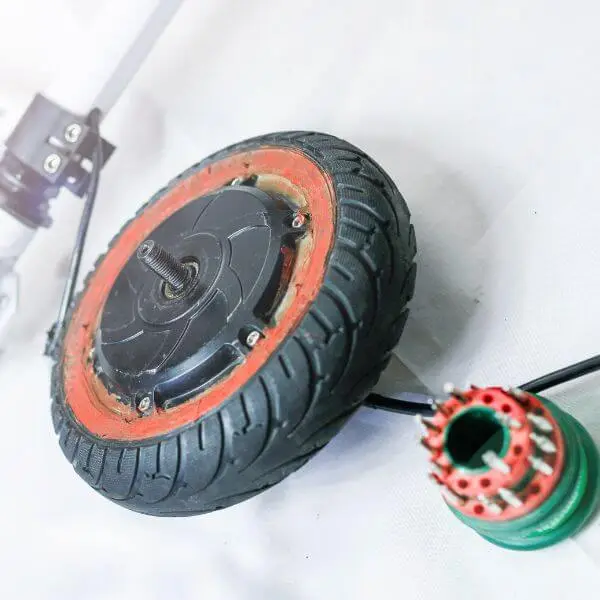
By understanding the effect of motor power on range, you can find the perfect electric scooter for your needs. Consider your intended use and required range, and you’ll be all set for efficient, enjoyable journeys.
Weight of the rider
Weight is hugely important for the electric scooter range. It affects performance and battery life.
Here’s how rider weight affects the range of an electric scooter:
| Rider Weight and the Range of an Electric Scooter | |
|---|---|
| Weight (lbs) | Average Range (miles) |
| 100-150 | 20 |
| 151-200 | 18 |
| 201-250 | 16 |
| 251-300 | 14 |
| 301 and above | 12 |
The more a rider weighs, the harder the motor must work. This uses up more energy and shortens the range of the scooter.
Fun fact! The idea of accounting for rider weight when designing electric scooters was first thought up in the early days of scooter development. Engineers discovered this would make scooters more efficient and enjoyable to use.
Terrain and riding conditions
Terrain, road conditions, off-road riding, and riding style can all affect the range of an electric scooter. Uphill rides require more energy, while downhill rides can conserve it. Smooth, well-paved roads are ideal. Off-road riding is a challenge as it needs additional power. Aggressive acceleration and braking use more battery power, whereas gradual changes help maximize the distance.
Wind speed and temperature also make a difference. Headwinds create resistance and reduce range. Windy conditions increase drag, while cold temperatures reduce battery performance.
Different models of electric scooters vary in their range of capabilities. Riding on hilly terrains can reduce range by up to 50%. Thus, it is important to understand the terrain and riding conditions to determine the expected range.
Typical Range of Electric Scooters
Now I will summarize the different distances these scooters can cover, giving you a clearer picture of the options for your desired range.
Range of entry-level electric scooters
For entry-level electric scooters, range is important. That’s the distance it can travel on a single charge. On average, it’s usually 15-20 miles. But, it can depend on the weight of the rider, speed, terrain, and even weather. Some entry-level models have smaller batteries, meaning less range.
So, riders need to plan their trips accordingly. Features like regenerative braking help recharge the battery while slowing. However, manufacturers’ claims may not always be achievable in real life.
| Range of Entry-level Electric Scooters | |
|---|---|
| Scooter Model | Average Range (miles) |
| Unagi Model One (single-motor E250) | 15.5 |
| Razor E300 Electric Scooter | 9-10 |
| Gotrax GXL V2 Commuting Electric Scooter | 12 |
| Glion Dolly Foldable Lightweight Adult Electric Scooter | 15 |
| Xiaomi Mi M365 | 18.6 |
Check out some best electric scooters for children here.
Range of mid-range electric scooters
Mid-range electric scooters are famed for their efficiency and distance. Look at the range of miles they can cover on a single charge:
| Range of Mid-range Electric Scooters | |
|---|---|
| Scooter Model | Average Range (miles) |
| Segway Ninebot ES4 | 28 |
| NIU KQi3 Pro | 31 |
| Apollo Ghost | 39 |
| Apollo Phantom | 40 |
| SPLACH Titan | 44 |
These figures may vary. Factors like terrain, rider weight, and speed influence their range.
Besides range, mid-range electric scooters offer other features. For example, some have regenerative braking systems. These help extend battery life by recovering energy.
John was a commuter. He swapped his traditional gasoline-powered scooter for an electric one. Its range surprised John. He saved money on fuel and contributed to a better environment.
Read the review of Hiboy S2 Pro electric scooter here.
Range of high-end electric scooters
High-end electric scooters offer an array of ranges to fit riders who need lengthy trips. These scooters use the most modern battery technology, allowing them to go far without needing to be recharged often.
| Range of High-end Electric Scooters | |
|---|---|
| Scooter Model | Average Range (miles) |
| Mantis King GT | 56 |
| NAMI Klima Max | 60 |
| EMOVE Cruiser S | 62 |
| Nami Burn E 2 MAX | 90 |
These scooters offer a diversity of choices based on the distance the rider wants to cover. For example, NAMI Klima Max can travel 60 miles, and Nami Burn E 2 MAX D up to 90 miles. This way, riders can select the scooter that fits their needs best.
Riders need to take into consideration the terrain, weather, and load capacity when choosing a high-end electric scooter. Thinking about these elements will help riders make a smart choice that maximizes the range and performance of their scooter.
Pro Tip: If you want to get more out of your high-end electric scooter, try riding at a consistent speed and avoiding abrupt accelerations or brakes. This way, you’ll be able to enjoy longer rides without having to recharge as often.
Tips to Maximize Electric Scooter Range
These tips will help you get the most out of your scooter’s battery life and ensure a longer and more efficient ride.
Charge the battery fully
Maximize the range of your electric scooter by charging the battery to its fullest! A fully charged battery means you can travel farther without the need to recharge. Here’s a 5-step guide to help you out:
- Connect the charger to a power outlet.
- Connect the charger to the scooter’s charging port.
- Monitor the charger’s indicator light to see progress.
- Don’t unplug or interrupt the charging process.
- Charge until the indicator shows it is full.
Take proper care of your battery too! Check for signs of damage or wear and take necessary precautions to maintain its lifespan.
I’ll share a story about how charging my battery fully changed things. Previously, I charged it partly due to lack of time. But one day I charged it overnight and was amazed at how far I could go without recharging! This saved me time and improved my productivity during my daily commute.
Charge your electric scooter’s battery to its maximum capacity to enjoy extended ranges and make your rides more enjoyable! Don’t miss out on its capabilities.
Maintain proper tire pressure
It’s essential to maintain the correct tire pressure on your electric scooter. Wrong pressure can lead to low performance, short battery life, and safety issues. Here’s what you should do:
- Check the pressure often: Use a tire pressure gauge to measure the air pressure in your scooter tires. Check once a week.
- Follow manufacturer’s guidelines: Read the user manual or contact the manufacturer to get the right tire pressure for your scooter model. Different scooters need different pressures.
- Inflate or deflate: Change the tire pressure as per the manufacturer’s advice. Under-inflated tires increase rolling resistance and consume more energy. Over-inflated tires can decrease traction and make the ride harsher.
- Invest in an air pump: Buy a good quality air pump that measures and inflates your tires accurately. Avoid gas station pumps. They’re not precise enough for smaller scooter tires.
- Monitor temperature changes: Tire pressure drops with decreasing temperatures. Adjust accordingly in colder seasons.
Tire pressure helps with range, grip, maneuverability, and safety. Invest in puncture-resistant or tubeless tires for added protection from flats and better performance.
Avoid excessive braking and acceleration
Excessive braking and acceleration negatively affect your electric scooter’s range. So, to get the most out of your ride, it’s best to minimize these actions. Here are 6 tips to help:
- Control your speed: Maintain a steady one and avoid sudden bursts.
- Anticipate traffic: monitor the road and adjust your speed accordingly.
- Gradually speed up: Don’t start too quickly. This reduces motor strain and improves energy efficiency.
- Plan your stops: Slow down in advance. This conserves energy.
- Use regenerative braking: Many scooters have it. Take advantage of it.
- Practice smooth riding techniques: Fluid movements save power.
It’s also important to regularly maintain your scooter. Check tire pressure, battery condition, and wear and tear.
A friend of mine recently had an issue with her scooter’s range. After analyzing her riding habits, it became apparent that her braking and acceleration were to blame. She followed these tips and noticed an immediate improvement in her scooter’s range and ride.
By avoiding excessive braking and acceleration and practicing smooth riding techniques, you can maximize your electric scooter’s range and make your ride smoother.
Optimize riding conditions
If you want to get the most out of your electric scooter, optimize riding conditions. Here are some tips to help you do just that:
| Ride steadily: maintain a consistent speed to save battery and cover more distance. |
| Avoid hills: going uphill drains the battery quickly, so plan your route carefully. |
| Choose even surfaces: this reduces resistance and helps the scooter glide. |
| Check tire pressure: keep tires in good condition for optimal performance. |
| Stay on top of maintenance: check for any issues like loose bolts or worn parts. |
Also, don’t forget about the weight of the rider. If you’re carrying too much stuff or if you’re very heavy, it can decrease the range of your scooter.
Studies have found that optimizing riding conditions can increase the range of an electric scooter by up to 20%. So, put these tips into practice for your electric scooter adventures!
Conclusion
Electric scooters are becoming a hit for getting around cities. But how far do electric scooters go? It depends on battery capacity, terrain, and how you ride the scooter.
Battery capacity makes a vast difference. Ones with bigger batteries can cover greater distances. Lithium-ion batteries are usually better than lead-acid ones.
Terrain is important too. Going up hills eats up power so you can’t go as far. Flat surfaces or downhill let you save energy and go further.
It also matters how you ride. Going fast uses more energy and cuts the range. Slow and steady riding, with regenerative braking, can help you get the most out of your scooter.
Sarah’s story is inspiring. She switched from public transport and her car to an electric scooter for her daily commute. She takes to and from work without running out of battery. With smart planning and efficient riding, she’s happy with her greener ride.
Frequently Asked Questions
-
How far do electric scooters go on a single charge?
Electric scooters have a range of 15 to 30 miles on a single charge, depending on the model and battery size. Factors like rider weight, terrain, and speed can also affect the scooter’s range.
-
How long does it take to recharge an electric scooter?
The charging time for electric scooters can vary depending on the battery capacity and charger type. On average, it takes about 4 to 6 hours to fully recharge an electric scooter, but some fast chargers can reduce this time to around 2 hours.
-
Can you ride electric scooters on long distances?
They designed electric scooters for short to medium-distance travel, such as commuting within a city or neighborhood. While they can cover relatively long distances, their range limitations and battery life make them less suitable for extended trips.
-
What can affect the range of an electric scooter?
Several factors can affect the range of an electric scooter, including rider weight, terrain, speed, weather, and battery age. Uphill rides, faster speeds, and heavier riders can drain the battery more quickly and reduce the scooter’s overall range.
-
Can you extend the range of an electric scooter?
There are a few ways to extend the range of an electric scooter. You can ride at slower speeds, avoid steep hills, maintain proper tire pressure, and use an energy-efficient riding style. Some scooters also offer additional battery packs or larger battery options for increased range.
-
Are there any electric scooters with longer ranges available?
Yes, there are electric scooters available for longer ranges. High-performance models or those designed for long-range commuting can offer ranges of up to 60 miles or more on a single charge. But, these scooters often come at a higher price point.
-
Reviews1 year ago
The 12 Best Kick Scooters for Commuting
-
Reviews1 year ago
The Top 12 Pro Scooter Brands for 2023 (Trick Scooter Brands) Buy Now
-
Blog2 years ago
How to Teach Your Kids to Ride a Scooter| 6 Brilliant Suggestions
-
Blog2 years ago
Top 10 Scooter Riders in the World
-
Blog10 months ago
4 Reasons a Scooter is the Best Present for Kids
-
Blog2 years ago
What Electric Scooter Protective Gear Do You Always Need for Riding?
-
Blog10 months ago
9 Simple Kick Scooter Riding Tips For Beginners to Ride Comfortably
-
Blog2 years ago
The Complete Guide to Knowing the Parts of a Pro Scooter
-
Reviews1 year ago
The Best 3-Wheel Scooters for Kids for 2023
-
Reviews11 months ago
The 22 Best Pro Scooters at Amazon 2023
-
Reviews1 year ago
The 10 Best Pro Scooter Wheels: Which Ones are They? 2023 Reviews
-
Blog11 months ago
Scooter Size Chart – Find the Right Size for You Easily
-
Blog2 years ago
Buying Guide| How to Pick The Best Pro Scooter for 2023
-
Blog1 year ago
DIY Electric Scooter Conversion: How To Convert Kick Scooter To Electric
-
Blog2 years ago
What is the Difference between a Normal Scooter and a Stunt Scooter?
-
Blog2 years ago
The 10 Terrific Kick Scooter Exercise Benefits
-
Reviews1 year ago
The Best Fuzion Scooter: A Comparison of the Top 5 Scooters
-
Blog11 months ago
What is the Difference Between Custom and Complete Pro Scooters?
-
Reviews1 year ago
The 10 Best Scooter Bars: Enhance Your Riding Experience
-
Blog2 years ago
Pro Scooters 101: An Uncomplicated Guide
-
Blog2 years ago
8 Reasons Why a Scooter is Easier Than a Skateboard
-
Blog2 years ago
How to Ride a Pro Scooter safely |5 Important Tips
-
Reviews2 years ago
Prodigy in Motion: The Envy Prodigy S9 Pro Scooter Review
-
Blog1 year ago
How to Perform the 16 Beginner Tricks for Scooters Effortlessly
-
Blog1 year ago
How to Make Kick Scooter Faster| 12 Speed Hacks
-
Blog2 years ago
What is the Appropriate Age for a Three-Wheel Scooter?
-
Blog1 year ago
How to Brake on a Kick Scooter: Scooter Braking Techniques
-
Reviews1 year ago
The 12 Best Pro Scooter Decks for Freestyle and Street Riding for 2023
-
Blog2 years ago
What is an Electric Scooter | A Detailed Guide for Beginners
-
Blog2 years ago
How to Lock an Electric Scooter: Protect Your Investment Efficiently
-
Blog2 years ago
A Guide to Traveling with a Kick Scooter| Joyous Scootering
-
Blog1 year ago
Top 10 Best Pro Scooter Tricks for Intermediate Riders| Tricks Guide



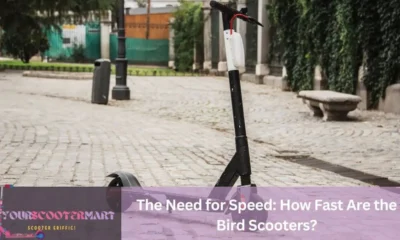







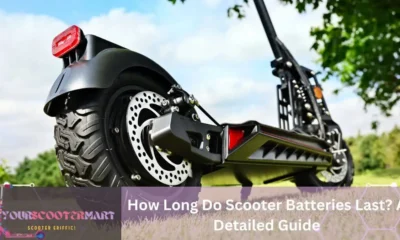

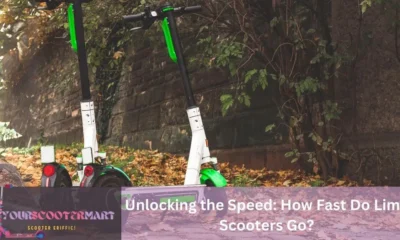











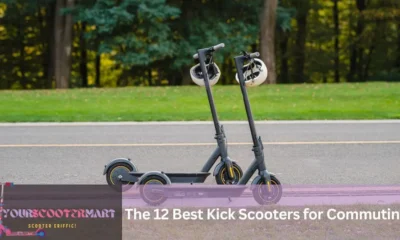
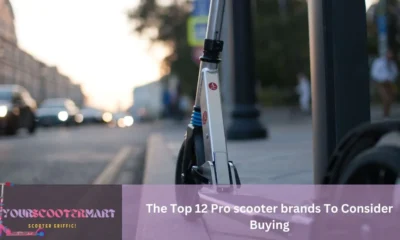



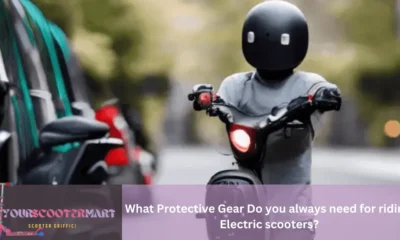
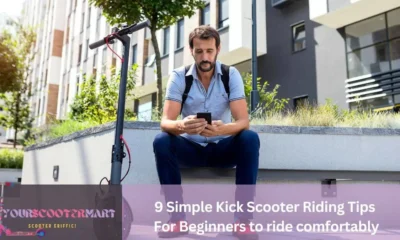

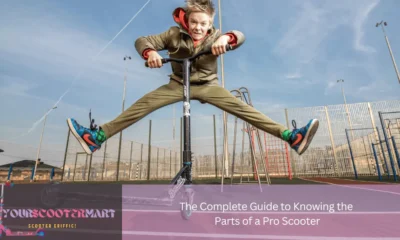





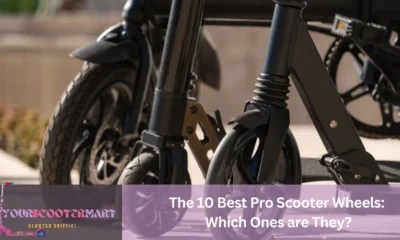



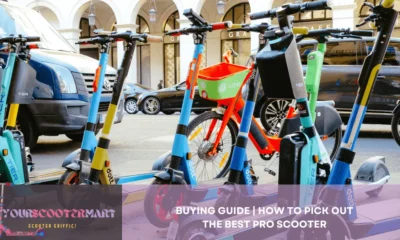

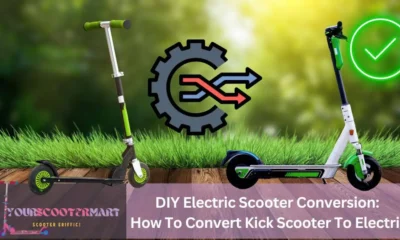







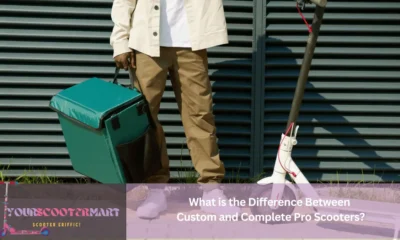

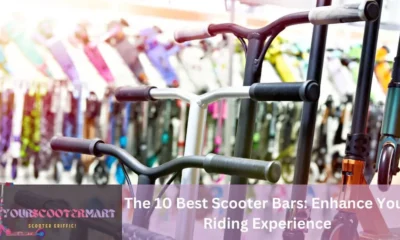





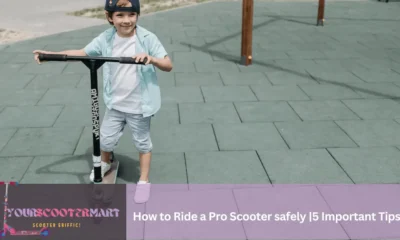





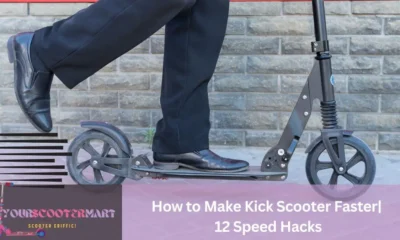



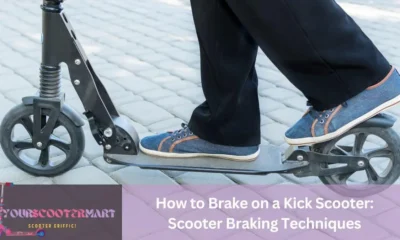

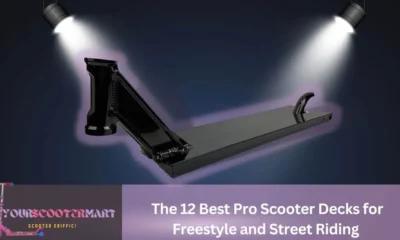

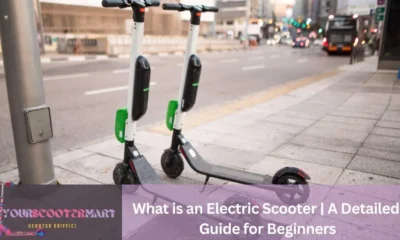

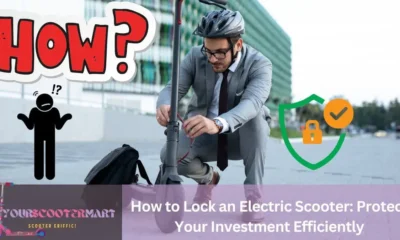





Pingback: How To Lock An Electric Scooter: Protect Your Investment Efficiently
Pingback: How To Brake On A Kick Scooter: Scooter Braking Techniques
Pingback: How Much Do Electric Scooters Cost? Affordable To High-End